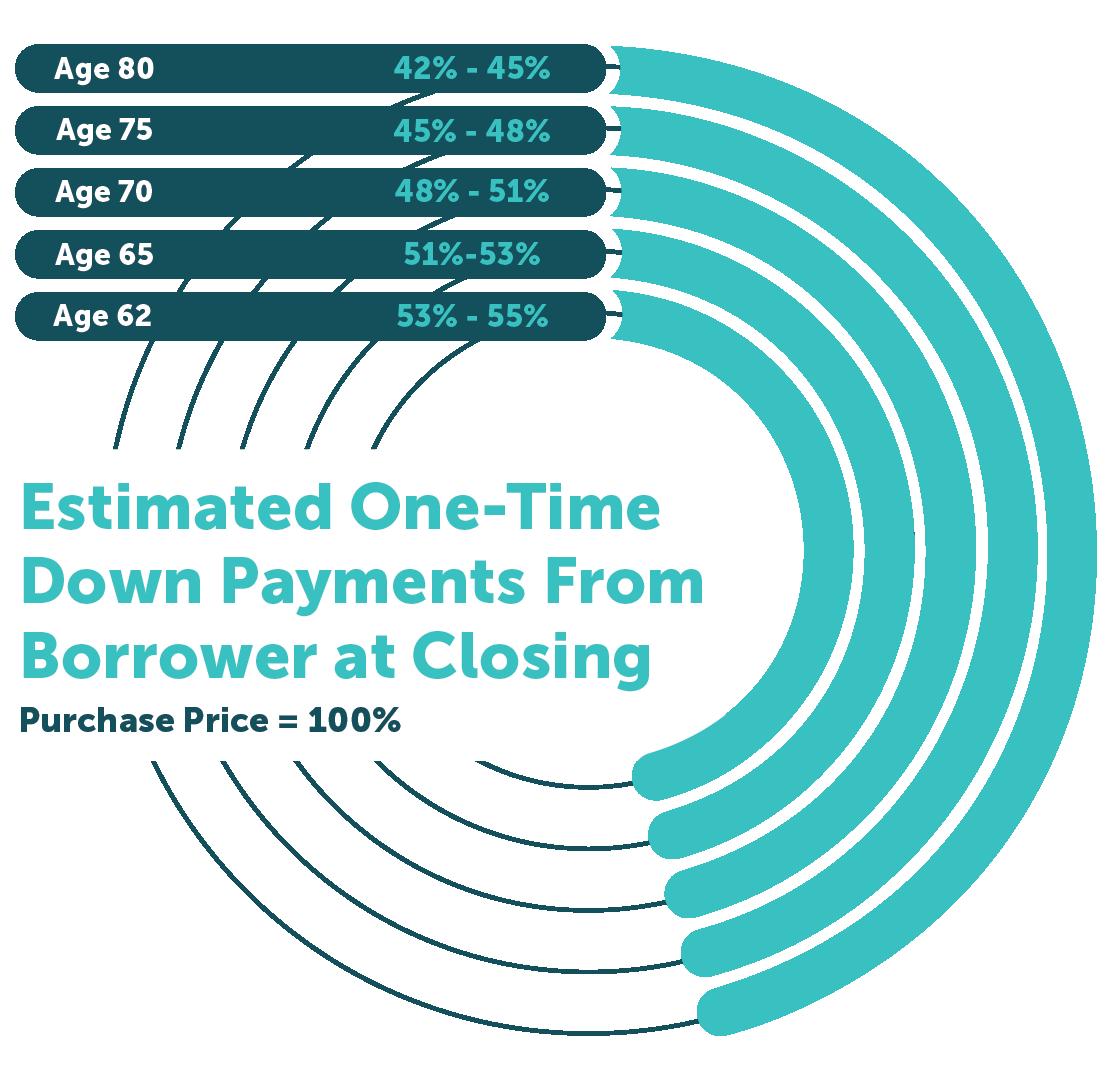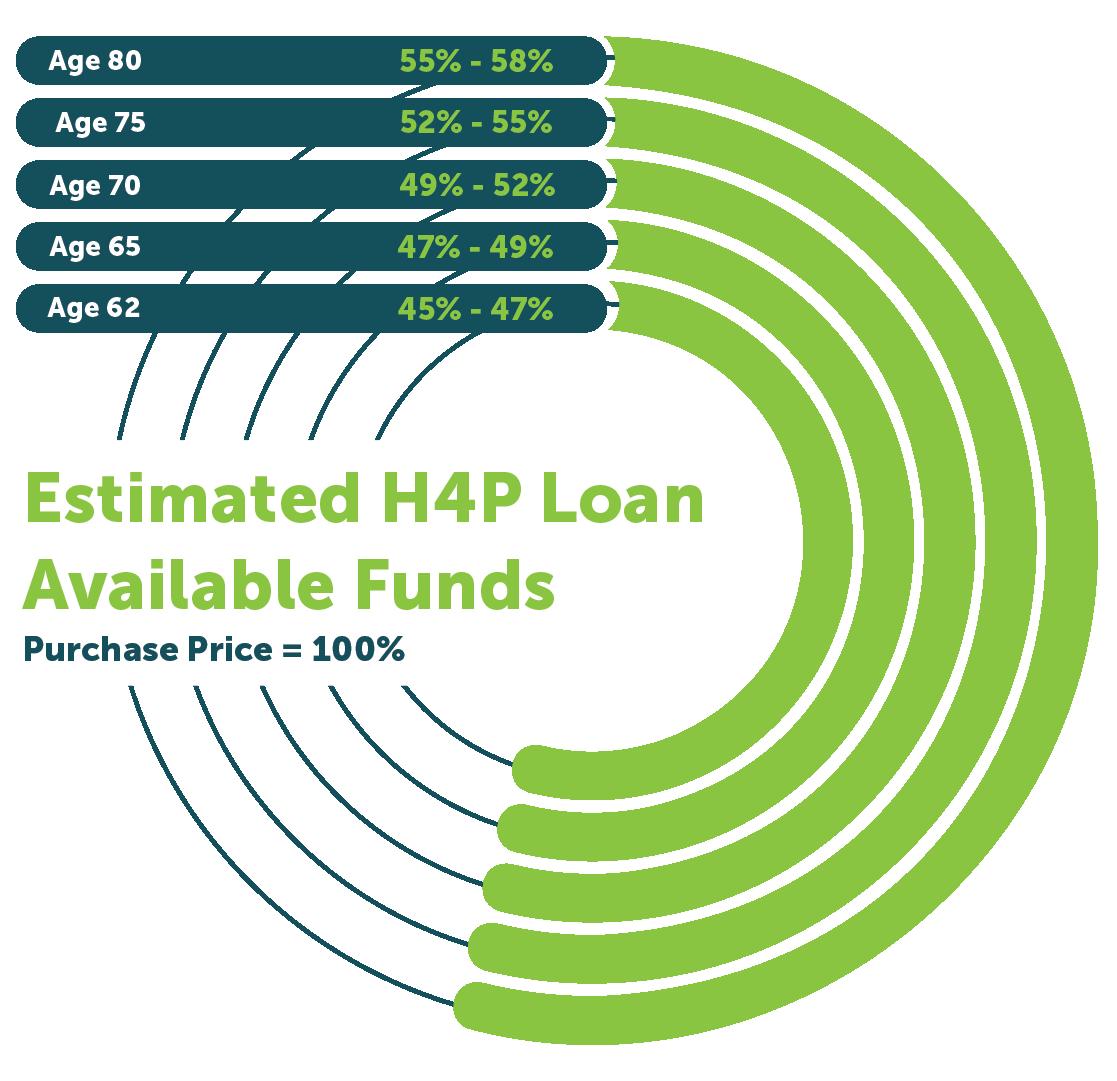
1 minute read
Down Payment Requirement
The Down Payment Requirement.

When calculating the amount of H4P loan funds available to
the borrower (and, consequently, the amount of down payment funds that will be needed from the borrower), the expected interest rate (the 10-year Constant Maturity Treasury plus the lender margin) plays a role — along with the youngest borrower’s age and the value of the purchased home up the H4P loan limit.
Generally speaking, the lower the expected interest rate is and the older the youngest borrower is — the less funds (as a percentage of the total sales price) the borrower will need to bring to closing as a down payment. These graphs show the estimated loan funds available (expressed as a percentage of the home purchase price) from utilizing an FHA-insured H4P loan to purchase a home. Loan proceed percentages are based on home values up to the FHA limit. The down payment in the chart does not include initial mortgage insurance premiums, origination fees, and third party closing costs. To get an instant estimate on how much loan proceeds you may qualify for on a home purchase price of your choosing, use our online calculator at
62plushomebuyer.com/H4Pcalculator
*This information is provided as a guideline and does not reflect the final outcome for any particular homebuyer or property. The actual H4P available funds are based on current interest rates, current charges associated with loan, borrower date of birth (or non-borrowing spouse, if applicable), the property sales price and standard closing cost. Interest rates and loan fees are subject to change without notice. Following the closing of the home purchase, no further principal or interest payments will be required as long as one borrower occupies the home as their primary residence and adheres to all HUD guidelines of loan. Borrower must remain current on property taxes, homeowner’s insurance (and homeowner association dues, if applicable), and home must be maintained.










